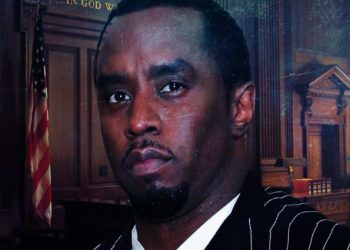In 1980, the year the new documentary “Television Event” (in theaters) opens, researchers found that about three-quarters of Americans believed there would be nuclear war in the next 10 years. Schoolchildren participated in evacuation drills. There were enough nuclear weapons in America and the Soviet Union to wipe out the world’s population many times over. And yet, as participants in the film repeatedly point out, for the most part people couldn’t bear to think about it. We find it hard to live with our own imminent destruction and also remember to take out the trash regularly.
That knowledge, though, gave rise to “The Day After,” the controversial TV movie that aired on ABC in 1983 and was watched by more than 100 million people, about 67 percent of the American viewing public that evening. The film, shot in Lawrence, Kan., depicts the very real-feeling aftermath of a nuclear attack.
The production and release were fraught. Some executives felt that TV wasn’t the place to scare people; there was a lot of strife behind the scenes. To tell the story of “The Day After,” the director, Jeff Daniels, weaves together copious behind-the-scenes production footage with contemporary interviews. The “Day After” director, Nicholas Meyer, still seems a little scarred by the experience. Brandon Stoddard, then president of ABC Motion Pictures, talks about conceiving the idea for a movie that “has meaning, that has import.” The more skeptical, practical Stu Samuels, then vice president of ABC Motion Pictures, speaks at length about the many challenges of getting this kind of movie shot and on the air, including run-ins with the network’s standards department. Edward Hume, who wrote “The Day After,” and Stephanie Austin, an associate producer, talk about the film, as does Ellen Anthony, who lived in Lawrence and played the youthful Joleen, a girl who must live in an underground bunker with her family.
“Television Event” makes a very compelling case that “The Day After” was a groundbreaking cinematic achievement, even if it was made for the small screen. There were plenty of difficulties, both on the ground and in the edit room; there was network skepticism and even, eventually, some disapproval by the federal government. One flaw in documentaries of this sort can be a chorus of interviewees who all echo one another and seem basically in agreement, but that is not the case here: The subjects of “Television Event” often express skepticism or outright animosity toward one another, giving different versions of events and opinions about the process. That not only makes it a fascinating glimpse into this production, but reminds the audience how tricky it is to get anything made, let alone a movie like “The Day After.”
“Television Event” also shows how message-driven entertainment, which can so often be preachy and boring, can also accomplish its goals. Today, movies and TV intended for the biggest audience possible often water down their storytelling and generalize in order to avoid anything that might challenge, frighten or unsettle the audience. But if the tale of “The Day After” is any indication, it’s sometimes worth trying the opposite: being direct and clear, and a little shocking, and trusting that the audience will respond.
Alissa Wilkinson is a Times movie critic. She’s been writing about movies since 2005.
The post When the Whole Country Watched a Nuclear War Movie at Once appeared first on New York Times.




